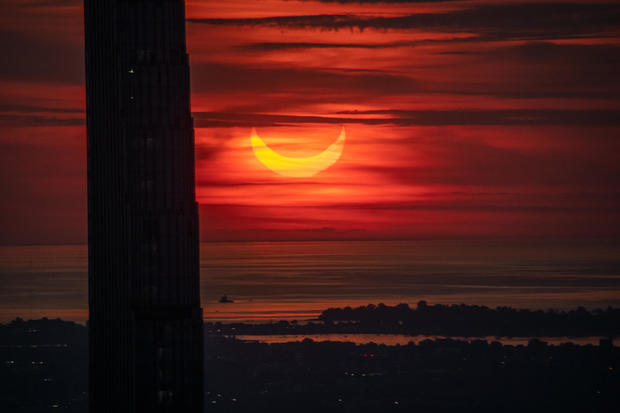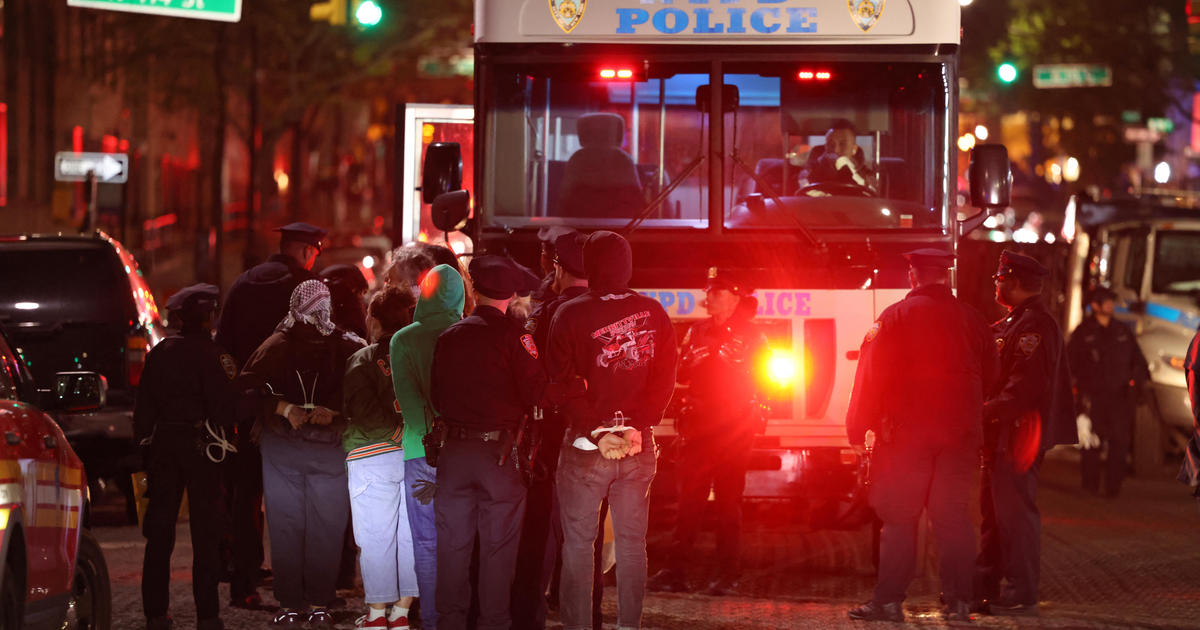Will we be able to see Saturday's "ring of fire" eclipse in the Tri-State Area?
NEW YORK -- An exciting celestial event unfolds Saturday across the country – an annular solar eclipse.
CBS New York's Vanessa Murdock spoke with NASA about how it marks the kickoff to heliophysics' big year.
The spectacle created by the moon blocking the sun is unforgettable. The Big Apple was not in the path totality during the total eclipse of August 2017, but 70% was still well worth waiting in line for.
An annular eclipse in June of 2021 crafted red devil horns at sunrise, and as the sun rose above the horizon, it resembled a crescent moon.
Saturday, another annular eclipse -- a "ring of fire" eclipse -- will delight millions across the country, brighten social media feeds and mark the start of heliophysics' big year, says NASA's Patrick Koehn.
"Fourteen months or so of really exciting events, starting, of course, with Saturday's eclipse," said Koehn, research and analysis lead for the Heliophysics Division at NASA.
The path of totality Saturday runs from Texas through Oregon. Locally, the moon gradually eclipses about 25% of the sun between noon and 3 p.m.
"I'm excited about Saturday's event, but I'm not excited about Saturday's weather prediction," said Jackie Faherty, an astrophysicist at the American Museum of Natural History.
Faherty says the worst thing you can do to an eclipse is put a cloud anywhere near the sun.
Your First Alert Weather Team is forecasting clouds and then some Saturday.
But that's no problem for eclipse enthusiast George Aronson.
"I can always watch it online," he said.
Unfortunately, your glamorous eclipse glasses won't get much use Saturday, but don't bury them too far back in the closet; you'll need them on Monday, April 8, 2024.
"The one that everybody should be marking their calendars for because that one is a total eclipse," Faherty said.
That's the second big event of heliophysics' big year.
"There's just something, there's something deeply human about it," Koehn said.
Faherty says Buffalo and Rochester will be in the path of totality for that one. Here in the city, the moon will cover 90% of the sun. Fingers crossed no clouds get in the way then.
Heliophysics' big year wraps up in December 2024 when NASA's Parker Solar Probe makes its closest approach to the sun while gathering that will help predict significant space weather events.






